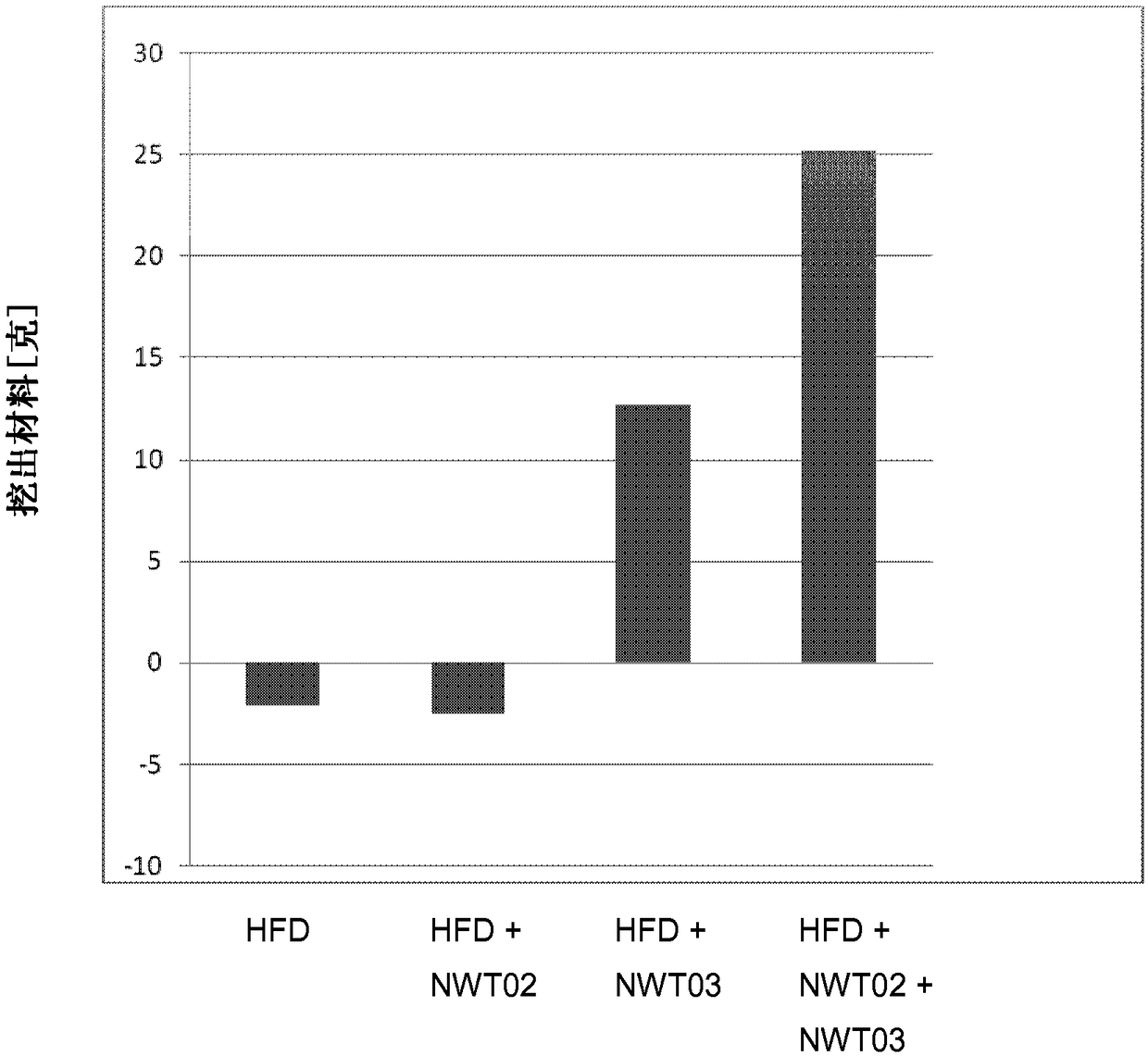Composition for prevention or treatment of neurodegenerative diseases
A neurodegenerative, aqueous composition technology, used in neurological diseases, neuromuscular diseases, drug combinations, etc.
- Summary
- Abstract
- Description
- Claims
- Application Information
AI Technical Summary
Problems solved by technology
Method used
Image
Examples
Embodiment 1
[0046] Example 1: Creation of a composition comprising lutein.
[0047] Compositions comprising lutein were produced from eggs obtained by feeding lutein and zeaxanthin to chickens and collecting egg yolks from the eggs produced by these chickens (WO 2009 / 078716). These eggs are referred to herein as enriched eggs.
[0048] The feed used to produce enriched eggs is formulated and produced within the legal requirements for animal feed. The use of lutein and zeaxanthin is regulated in accordance with EU Regulation 1831 / 2003. The dosage of lutein and zeaxanthin in the feed does not exceed the legal limit of 80ppm in animal feed.
[0049] Poultry fed a feed rich in lutein and zeaxanthin produce enriched eggs containing 45mg-80mg of lutein per kilogram of yolk and 10mg-30mg of zeaxanthin per kilogram of yolk.
[0050] The animals were also fed a diet rich in omega-3 fatty acids; eggs contained about 200 mg omega-3 fatty acids per kg yolk with a standard deviation of 10 mg.
Embodiment 2
[0051] Example 2: Manufacture of an aqueous dispersion comprising lutein.
[0052] Eggs enriched with lutein and DHA were produced according to an ISO 22000 / HACCP certified quality scheme as described in Example 1. Eggs are separated into yolks and whites in an automated facility in ISO 22000:2005 certified equipment. Egg yolks from 165,000 enriched eggs were mixed with 5,500 liters of buttermilk containing 80 mg of polar lipid per liter and 170 kg of sugar (15 min, 4°C). The liquid was pasteurized at 65°C for 3 minutes and cooled to 4°C. This composition is referred to herein as NWT-02 or NWT-02 liquid formulation.
[0053] For storage, the composition was dried to a powder with a moisture content of 4% (± 1%) and mixed with a free-flowing agent (SiO 2 , Sipernat 22S) mixed.
Embodiment 3
[0054] Example 3: Preparation of protein hydrolysates comprising dipeptides and tripeptides.
[0055] A 5% (w / v) aqueous solution of lysozyme (100% protein content, Belovo SA, Bastogne, Belgium) was prepared and adjusted to a pH of 7.5 to 8.5 with 3M KOH . By adding Alcalase (Tm) (Novozymes) to a final concentration of 4% by protein to initiate hydrolysis. The solution was incubated at 60°C for a total of 5-6 hours with continuous agitation. Alcalase was then inactivated by raising the temperature to 90°C for 15 minutes. The solution was then cooled to 2°C and stored overnight with continuous stirring.
[0056] The resulting hydrolyzate solution was filtered through a 10 μm filter and then through a 1 μm filter. Afterwards, the filtrate was heat-treated at 135° C. for 15 seconds and concentrated to a dry matter of 57° Brix (about 45% dry matter) by means of a NIRO evaporator at a flow rate of 3300 liters / hour at 90° C. After evaporation, the product was spray dried to ...
PUM
| Property | Measurement | Unit |
|---|---|---|
| molecular weight | aaaaa | aaaaa |
Abstract
Description
Claims
Application Information
 Login to View More
Login to View More - Generate Ideas
- Intellectual Property
- Life Sciences
- Materials
- Tech Scout
- Unparalleled Data Quality
- Higher Quality Content
- 60% Fewer Hallucinations
Browse by: Latest US Patents, China's latest patents, Technical Efficacy Thesaurus, Application Domain, Technology Topic, Popular Technical Reports.
© 2025 PatSnap. All rights reserved.Legal|Privacy policy|Modern Slavery Act Transparency Statement|Sitemap|About US| Contact US: help@patsnap.com


